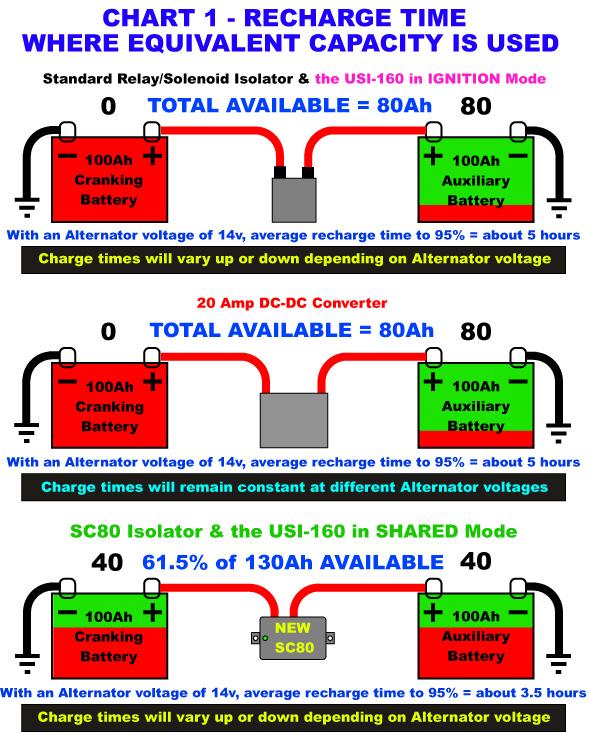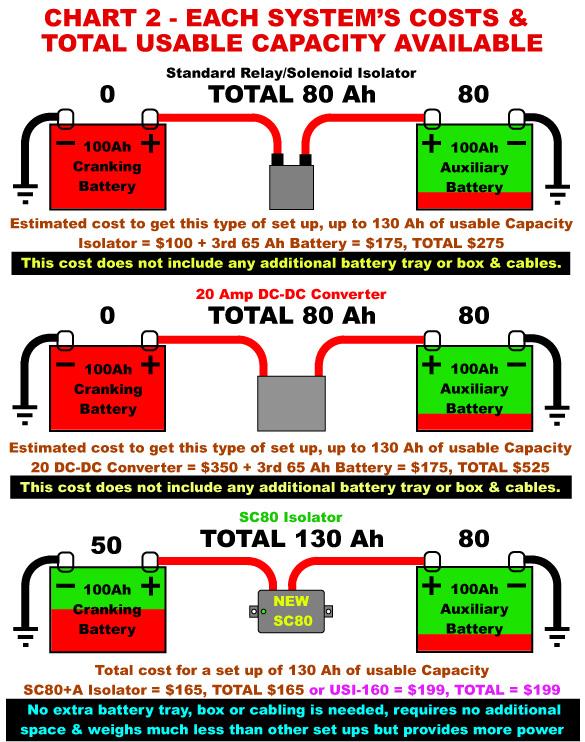I have installed many DC-DC charges, relays, and solinoids.
I feel the best way for me on my Disco was to install a second battery(identical), permintly linked to my main battery.
Twice the power all of the time. (perfect if you have a whinch)
For all of my secondary electrics I use a solid state under voltage relay.
$40 Jaycar. (yes it is good quality, and voltage cut out is variable 9V - 14V)
This is a 40Amp unit, solid state, no sparks or spikes to worry about.
Fridge and all of my lighting come off this.
i set my voltage cut off at 12V, thus when both of my batties get to 12volts the fridge turns off. (same as dropping one battery down to 10.8, which really hurts the battery)
the batties are prtected from getting too flat. and the Disco starts better.
For me this was a winner on every front.
The draw back for other people will be that ARB will not install it for you, and batteries should be of same type, (eg both starting or both deep and age within 1 year, size not dependant.)




 Reply With Quote
Reply With Quote



Bookmarks